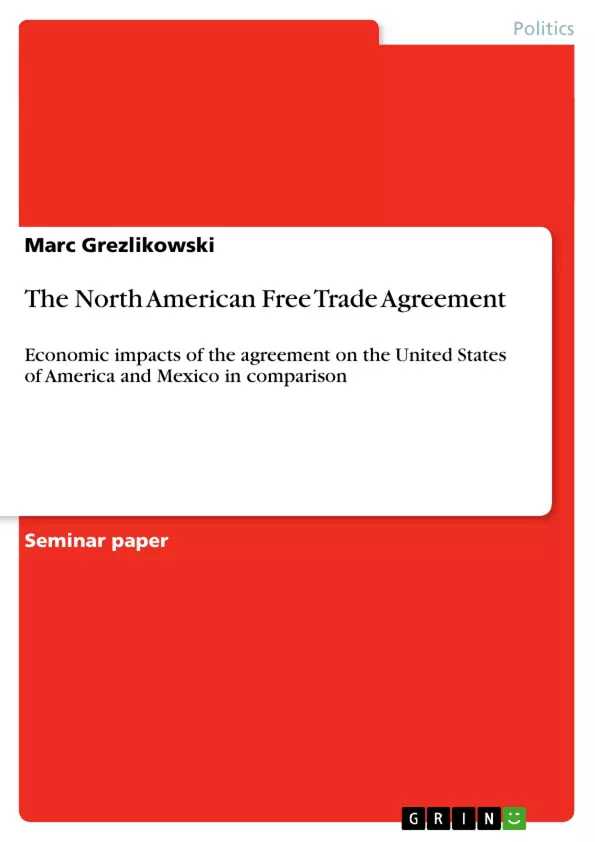In the wake of globalization, many countries are reducing trade barriers and tariffs, resulting in a rise of free-trade areas in which the participating countries trade freely among each other without any restrictions. The goal of these agreements is the increase of wealth in each nation’s economy. To reach this goal, the USA, Canada and Mexico negotiated the North American Free Trade Agreement (NAFTA) which came into effect on January, 1st 1994. It was the world’s largest free-trade area with a combined population of over 360m people and a total GDP of 6$ trillion. Today, the NAFTA area comprises a 12.5$ trillion economy and a 430m strong population. For the first time, two highly industrialized, rich countries affiliated themselves with a poorer, newly industrialized country.
At the time of its ratification, the agreement was extremely controversial in all three member states and opinions in political camps differed vastly. Supporters of the contract were mostly big companies and investors who were hoping that it would loosen restrictions and barriers on the capital market. Opponents of the agreement were trade unions which, especially in the United States, railed heavily against it. They feared outsourcing and massive job displacements to Mexico, a country in which labor is incredibly cheap and environment protection laws are lax or do not even exist. In Mexico, landowners were skeptical of NAFTA because they feared unfair competition with US-American farmers who are still to this day greatly subsidized by the government.
Inhaltsverzeichnis (Table of Contents)
- Introduction
- About NAFTA
- Winners and Losers in Mexico
- Growth of Trade and Financial Flows
- Employment
- Conclusion
- Winners and Losers in the United States
- Employment
- Conclusion
- Conclusion
- Literaturverzeichnis
Zielsetzung und Themenschwerpunkte (Objectives and Key Themes)
This paper examines the North American Free Trade Agreement (NAFTA) and its economic impacts on the United States and Mexico. The paper aims to provide a historical context of NAFTA, discuss the expectations and fears surrounding the agreement, and analyze its long-term effects on the participating countries.
- The historical context and development of NAFTA
- The economic impacts of NAFTA on Mexico and the United States
- The role of trade unions and other opponents in the NAFTA debate
- The effects of NAFTA on employment and investment in both countries
- The political implications of NAFTA and its legacy
Zusammenfassung der Kapitel (Chapter Summaries)
The introduction outlines the historical context of NAFTA and highlights its significance as a major free trade agreement. It also discusses the differing opinions surrounding NAFTA, particularly regarding the potential for job losses and economic instability.
The chapter about NAFTA provides detailed information about the agreement's origins, negotiation process, and key provisions. It also delves into the contrasting perspectives of supporters and opponents, emphasizing the role of influential figures such as President Bill Clinton and Ross Perot.
The section on winners and losers in Mexico explores the economic impacts of NAFTA on Mexico's trade, employment, and overall economy. It examines the growth of Maquiladora factories and the role of Mexico's state-owned oil company.
The chapter dedicated to the United States focuses on the economic impacts of NAFTA on its economy, including employment trends and the potential for outsourcing.
Schlüsselwörter (Keywords)
The main keywords and focus topics of this paper include: North American Free Trade Agreement (NAFTA), free trade, trade barriers, economic impacts, employment, investment, Mexico, United States, trade unions, outsourcing, Maquiladora factories, globalization.
- Arbeit zitieren
- Marc Grezlikowski (Autor:in), 2007, The North American Free Trade Agreement, München, GRIN Verlag, https://www.grin.com/document/129373



